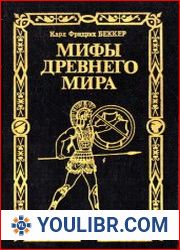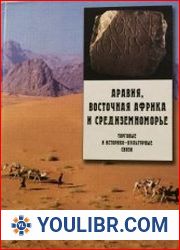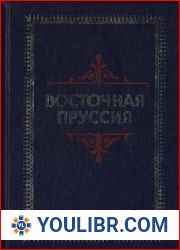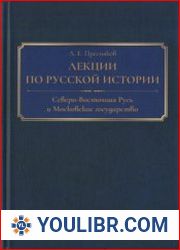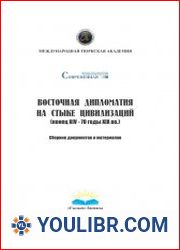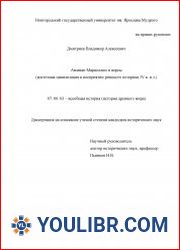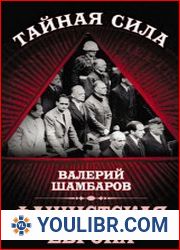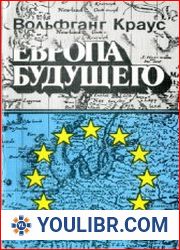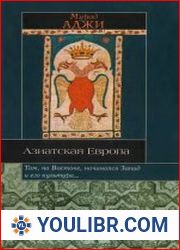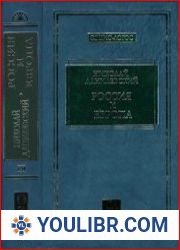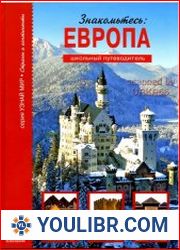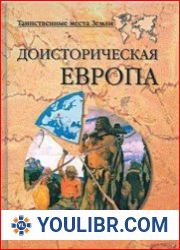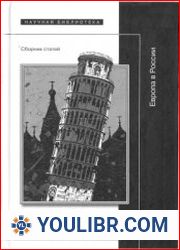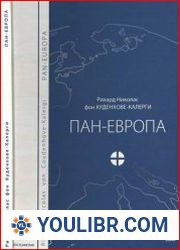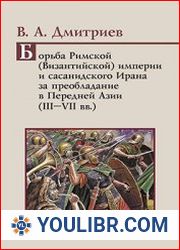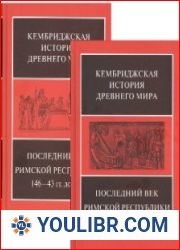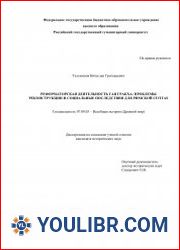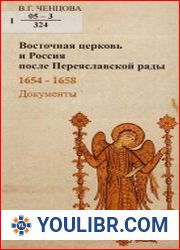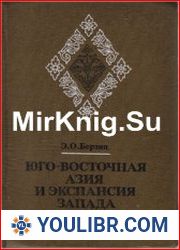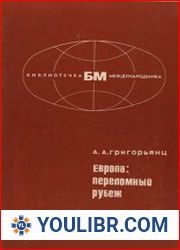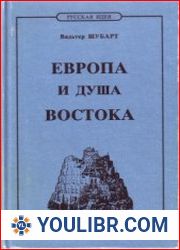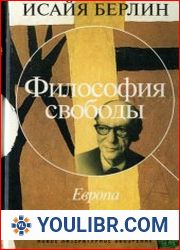
BOOKS - HISTORY - Восточная Европа в римской картографической традициии. Тексты, пере...

Восточная Европа в римской картографической традициии. Тексты, перевод, комментарий
Author: Подосинов А.В.
Year: 2002
Format: PDF
File size: 55.8 MB
Language: RU
Year: 2002
Format: PDF
File size: 55.8 MB
Language: RU
The next issue of the code "The oldest sources on the history of Eastern Europe" publishes monuments of Roman cartography, originating from the world map of Mark Vipsanius Agrippa (I century BC, only its descriptions have been preserved), which continued in the map of the Black Sea from Dura Europos (mid III century AD) and ended with the monumental "Pevtinger map" of the world (last centuries of Roman history). The book also contains some literary works that are descriptions of maps ("Division of the Circle of Lands," "Measurement of the Provinces," "Cosmography" by Julius Honorius, "Cosmography" by Ravenna Anonymous and some others). The book contains reproductions of maps, their descriptions, legends of maps and texts of literary works, their Russian translation, as well as a detailed historical and philological commentary on literary texts and legends of maps, analyzing their source significance for the history of Eastern Europe.
كتاب «أوروبا الشرقية في التقليد الروماني لرسم الخرائط» (أوروبا الشرقية في التقليد الروماني لرسم الخرائط) هو دراسة شاملة لتطور التكنولوجيا، وتحديداً في مجال رسم الخرائط، خلال العصر الروماني. الكتاب مكرس للحاجة إلى فهم عملية التقدم التكنولوجي وتأثيرها على بقاء ووحدة الناس أثناء الحرب. يبدأ النص بحرف كبير، مع الحفاظ على القواعد الصحيحة طوال الوقت. فيما يلي وصف تقريبي للكتاب: يستكشف الكتاب أقدم المصادر في تاريخ أوروبا الشرقية، والتي يعود تاريخها إلى القرن الأول قبل الميلاد، والتي تم الحفاظ عليها في شكل آثار لرسم الخرائط الرومانية. وتشمل هذه خريطة مارك فيبسانيوس أغريبا العالمية وخريطة البحر الأسود من دورا يوروبوس في منتصف القرن الثالث الميلادي. يقدم الكتاب أيضًا أعمالًا أدبية مثل «تقسيم دائرة قياس أراضي المقاطعات» و «علم الكونيات» لجوليا هونوريا وآخرين. يحتوي الكتاب على نسخ من الخرائط والأوصاف وأساطير الخرائط ونصوص الأعمال الأدبية، إلى جانب ترجمتها الروسية وتعليق تاريخي وفقهي مفصل على النصوص الفنية وأساطير الخرائط. ويوفر هذا التحليل معلومات قيمة عن أهمية هذه المصادر بالنسبة لتاريخ أوروبا الشرقية وتطوير رسم الخرائط بوجه عام. 本「ローマ地図の伝統における東ヨーロッパ」(ローマ地図の伝統における東ヨーロッパ)は、技術の進化の包括的な研究であります、特に地図の分野で、ローマ時代の間に。この本は、戦争中の人々の生存と団結への技術進歩とその影響のプロセスを理解する必要性に捧げられています。テキストは大文字で始まり、全体を通して正しい文法を維持します。ここでは、本のおおよその説明です:本は、紀元前1世紀にさかのぼる東ヨーロッパの歴史に関する最古の情報源を探索します、ローマの地図の記念碑の形で保存されています。これらには、マーク・ヴィプサニウス・アグリッパの世界地図と、紀元3世紀半ばのドゥラ・エウロポスの黒海地図が含まれる。また、ジュリア・ホノリアなどの「地方の土地を測るサークルの区分」「コスモグラフィー」などの文学作品も紹介している。この本には、地図の複製、説明、地図の伝説、文学作品のテキスト、ロシア語の翻訳、および芸術的テキストと地図の伝説に関する詳細な歴史的および言語的解説が含まれています。この分析は、東欧の歴史と地図全般の発展のためのこれらの情報源の重要性に関する貴重な情報を提供します。 "로마지도 제작 전통의 동유럽" (로마지도 제작 전통의 동유럽) 이라는 책은 로마 시대의지도 제작 분야에서 기술의 진화에 대한 포괄적 인 연구입니다. 이 책은 기술 발전 과정과 전쟁 중 사람들의 생존과 연합에 미치는 영향을 이해해야 할 필요성에 전념하고 있습니다. 텍스트는 대문자로 시작하여 올바른 문법을 유지합니다. 이 책에 대한 대략적인 설명은 다음과 같습니다.이 책은 로마지도 제작의 기념비 형태로 보존 된 기원전 1 세기로 거슬러 올라가는 동유럽 역사에서 가장 오래된 자료를 탐구합니다. 여기에는 Mark Vipsanius Agrippa 세계지도와 AD 3 세기 중반 Dura Europos의 흑해지도가 포함됩니다. 이 책은 또한 "지방의 토지 측정 원 분할", Julia Honoria 등의 "Cosmography" 와 같은 문학 작품을 제시합니다. 이 책에는지도, 설명, 지도의 전설, 문학 작품의 텍스트, 러시아어 번역 및 예술적 텍스트 및지도의 전설에 대한 자세한 역사적 및 철학적 논평이 포함되어 있습니다. 이 분석은 동유럽의 역사와 일반적으로지도 제작의 발전에 대한 이러한 출처의 중요성에 대한 귀중한 정보를 제공합니다. The book "Восточная Европа в римской картографической традиции" (Eastern Europe in the Roman Cartographic Tradition) is a comprehensive study of the evolution of technology, specifically in the field of cartography, during the Roman era. The book focuses on the need to understand the process of technological advancement and its impact on human survival and unity in times of war. The text begins with a capital letter, maintaining proper grammar throughout. Here's a rough description of the book: The book explores the oldest sources on the history of Eastern Europe, dating back to the 1st century BC, which have been preserved in the form of monuments of Roman cartography. These include the world map of Mark Vipsanius Agrippa and the map of the Black Sea from Dura Europos mid-3rd century AD. The book also features literary works such as Division of the Circle of Land Measurement of the Provinces, Cosmography by Julius Honorius, and others. The book contains reproductions of maps, descriptions, legends of maps, and texts of literary works, along with their Russian translation and a detailed historical and philological commentary on literary texts and legends of maps. This analysis provides valuable insights into the significance of these sources for the history of Eastern Europe and the development of cartography in general. Das Buch „Osteuropa in der römischen kartographischen Tradition“ (Osteuropa in der römischen kartographischen Tradition) ist eine umfassende Untersuchung der Entwicklung der Technologie, insbesondere auf dem Gebiet der Kartographie, während der römischen Ära. Das Buch widmet sich der Notwendigkeit, den Prozess des technologischen Fortschritts und seine Auswirkungen auf das Überleben und die Einheit der Menschen während des Krieges zu verstehen. Der Text beginnt mit einem Großbuchstaben, wobei die korrekte Grammatik durchgehend beibehalten wird. Hier ist eine grobe Beschreibung des Buches: Das Buch untersucht die ältesten Quellen zur Geschichte Osteuropas aus dem 1. Jahrhundert v. Chr., Die in Form von Denkmälern der römischen Kartographie erhalten sind. Dazu gehören die Weltkarte von Mark Vipsania Agrippa und die Karte des Schwarzen Meeres von Dura Europos aus der Mitte des 3. Jahrhunderts nach Christus. Das Buch präsentiert auch solche literarischen Werke wie „Die Teilung des Kreises der Messung der Länder der Provinzen“, „Cosmography“ von Julia Honoria und anderen. Das Buch enthält Reproduktionen von Karten, Beschreibungen, Kartenlegenden, Texten literarischer Werke sowie deren russische Übersetzung und einen ausführlichen historisch-philologischen Kommentar zu künstlerischen Texten und Kartenlegenden. Diese Analyse liefert wertvolle Informationen über die Bedeutung dieser Quellen für die Geschichte Osteuropas und die Entwicklung der Kartographie im Allgemeinen. книга «Восточная Европа в римской картографической традиции» (Восточная Европа в римской Картографической Традиции) является всесторонним исследованием эволюции технологии, конкретно в области картографии, в течение римской эры. Книга посвящена необходимости понимания процесса технологического прогресса и его влияния на выживание и единство людей во время войны. Текст начинается с большой буквы, сохраняя правильную грамматику на всем протяжении. Вот примерное описание книги: Книга исследует древнейшие источники по истории Восточной Европы, относящиеся к I веку до нашей эры, которые сохранились в виде памятников римской картографии. К ним относятся карта мира Марка Випсания Агриппы и карта Чёрного моря из Дура Европос середины III века нашей эры. В книге также представлены такие литературные произведения, как «Деление круга измерения земель провинций», «Космография» Юлия Гонория и др. Книга содержит репродукции карт, описания, легенды карт, тексты литературных произведений, наряду с их русским переводом и подробный историко-филологический комментарий к художественным текстам и легендам карт. Этот анализ дает ценную информацию о значении этих источников для истории Восточной Европы и развития картографии в целом. 書「羅馬制圖傳統中的東歐」(羅馬制圖傳統中的東歐)是對羅馬時代技術演變的全面研究,特別是在制圖領域。該書著重於了解技術進步過程及其對戰爭期間人類生存和團結的影響。文本以大字母開頭,始終保持正確的語法。以下是該書的大致描述:該書探討了可追溯到公元前1世紀的東歐歷史上最古老的資料來源,這些資料以羅馬制圖學的古跡形式保存。其中包括Marcus Vipsanius Agrippa的世界地圖和公元3世紀中葉Dur Europos的黑海地圖。該書還介紹了文學作品,例如朱利葉斯·奧諾裏烏斯(Julius Honorius)的「省土地測量圈的劃分」,「宇宙學」等。該書包含地圖的復制品,描述,地圖傳說,文學作品的文本,以及他們的俄語翻譯以及對藝術文本和地圖傳說的詳細歷史和語言學評論。這項分析提供了關於這些來源對東歐歷史和整個制圖發展的重要性的寶貴信息。
O livro « Oriental na Tradição Cartográfica Romana» ( Oriental na Tradição Cartográfica Romana) é um estudo completo sobre a evolução da tecnologia, especificamente no campo da cartografia, durante a era romana. O livro trata da necessidade de compreender o processo de progresso tecnológico e seus efeitos na sobrevivência e união das pessoas durante a guerra. O texto começa com a letra maiúscula, mantendo a gramática correta durante toda a extensão. Aqui está uma descrição do livro: O livro explora as fontes mais antigas da história da Oriental, do século I antes de Cristo, que foram preservadas como monumentos de cartografia romana. Eles incluem um mapa do mundo de Mark Vipsania Agrippa e um mapa do Mar Negro de Dura Europos em meados do século III. O livro também apresenta obras literárias como «Divisão do círculo de medição de terras das províncias», «Cosmografia», de Júlio Honório, etc. O livro traz reproduções de mapas, descrições, lendas de mapas, textos de obras literárias, juntamente com sua tradução russa e um comentário histórico e filológico detalhado sobre textos artísticos e lendas de mapas. Esta análise fornece informações valiosas sobre o significado dessas fontes para a história da Oriental e o desenvolvimento da cartografia em geral. Książka „ Wschodnia w rzymskiej tradycji kartograficznej” ( Wschodnia w rzymskiej tradycji kartograficznej) jest kompleksowym badaniem ewolucji technologii, szczególnie w dziedzinie kartografii, w czasach rzymskich. Książka poświęcona jest potrzebie zrozumienia procesu postępu technologicznego i jego wpływu na przetrwanie i jedność ludzi podczas wojny. Tekst zaczyna się od wielkiej litery, zachowując prawidłową gramatykę. Oto przybliżony opis książki: Książka bada najstarsze źródła historii Europy Wschodniej, sięgające I wieku pne, które zachowały się w formie zabytków rzymskiej kartografii. Należą do nich mapa świata Marka Vipsaniusa Agryppy oraz mapa Morza Czarnego z Dura Europos z połowy III wieku n.e. Książka przedstawia również takie dzieła literackie jak „Podział koła miary ziem prowincji”, „Kosmografia” Julii Honorii i innych. Książka zawiera reprodukcje map, opisy, legendy map, teksty dzieł literackich wraz z ich rosyjskim tłumaczeniem oraz szczegółowy komentarz historyczny i filologiczny na teksty artystyczne i legendy map. Analiza ta dostarcza cennych informacji na temat znaczenia tych źródeł dla historii Europy Wschodniej i rozwoju kartografii w ogóle. "Eastern Europe in the Roman Cartographic Tradition" (Roma Kartografik Geleneğinde Doğu Avrupa) kitabı, Roma döneminde özellikle kartografi alanında teknolojinin evrimi üzerine kapsamlı bir çalışmadır. Kitap, teknolojik ilerleme sürecini ve savaş sırasında insanların hayatta kalması ve birliği üzerindeki etkisini anlama ihtiyacına adanmıştır. Metin, boyunca doğru dilbilgisini koruyarak büyük harfle başlar. İşte kitabın yaklaşık bir açıklaması: Kitap, Roma haritacılığının anıtları şeklinde korunan, MÖ 1. yüzyıla dayanan Doğu Avrupa tarihi hakkındaki en eski kaynakları araştırıyor. Bunlar arasında Mark Vipsanius Agrippa dünya haritası ve MS 3. yüzyılın ortalarında Dura Europos'tan Karadeniz haritası bulunmaktadır. Kitap ayrıca "Eyaletlerin topraklarının ölçüm çemberinin bölünmesi", Julia Honoria ve diğerleri tarafından "Kozmografi'gibi edebi eserleri de sunmaktadır. Kitap, haritaların reprodüksiyonlarını, açıklamalarını, harita efsanelerini, edebi eser metinlerini, Rusça çevirilerini ve sanatsal metinler ve harita efsaneleri hakkında ayrıntılı bir tarihsel ve filolojik yorum içermektedir. Bu analiz, bu kaynakların Doğu Avrupa tarihi ve genel olarak haritacılığın gelişimi için önemi hakkında değerli bilgiler sunmaktadır. הספר ”מזרח אירופה במסורת הכרטוגרפית הרומית” (מזרח אירופה במסורת הכרטוגרפית הרומית) הוא מחקר מקיף של התפתחות הטכנולוגיה, במיוחד בתחום הקרטוגרפיה, בתקופה הרומית. הספר מוקדש לצורך להבין את תהליך ההתקדמות הטכנולוגית ואת השפעתו על הישרדותם ואחדותם של אנשים במהלך המלחמה. הטקסט מתחיל באות גדולה ומשמר את הדקדוק הנכון לאורך כל הדרך. להלן תיאור משוער של הספר: הספר חוקר את המקורות העתיקים ביותר על ההיסטוריה של מזרח אירופה, המתוארכים למאה ה-1 לפנה "ס, אשר נשתמרו בצורת מונומנטים של הקרטוגרפיה הרומית. אלה כוללים את מפת העולם של מארק ויפסניוס אגריפה ואת מפת הים השחור מדורה יורופוס של אמצע המאה ה-3 לספירה. הספר גם מציג יצירות ספרותיות כגון ”חלוקת מעגל המדידה של ארצות הפרובינציה”, ”קוסמוגרפיה” מאת ג 'וליה הונוריה ואחרים. הספר מכיל רפרודוקציות של מפות, תיאורים, אגדות של מפות, טקסטים של יצירות ספרותיות, יחד עם התרגום הרוסי שלהם ופרשנות היסטורית ופילולוגית מפורטת על טקסטים אמנותיים ואגדות של מפות. ניתוח זה מספק מידע רב ערך על חשיבותם של מקורות אלה להיסטוריה של מזרח אירופה ולהתפתחות הקרטוגרפיה בכלל. livre « L'Europe de l'Est dans la tradition cartographique romaine » est une étude complète de l'évolution de la technologie, en particulier dans le domaine de la cartographie, au cours de l'ère romaine. livre traite de la nécessité de comprendre le processus du progrès technologique et son impact sur la survie et l'unité des gens en temps de guerre. texte commence par une majuscule, tout en conservant la grammaire correcte tout au long. Voici une description approximative du livre : livre explore les sources les plus anciennes de l'histoire de l'Europe de l'Est, datant du 1er siècle avant JC, qui ont été conservées sous la forme de monuments de la cartographie romaine. Il s'agit de la carte du monde de Marc Vipsania Agrippa et de la carte de la mer Noire de Dura Europos au milieu du IIIe siècle. livre présente également des œuvres littéraires telles que « Division du cercle de la dimension des terres des provinces », « Cosmographie » Julia Honoria, etc. livre contient des reproductions de cartes, des descriptions, des légendes de cartes, des textes d'œuvres littéraires, ainsi que leur traduction russe et un commentaire historique et philologique détaillé sur les textes artistiques et les légendes de cartes. Cette analyse fournit des informations précieuses sur l'importance de ces sources pour l'histoire de l'Europe de l'Est et le développement de la cartographie en général. L'orientale nella tradizione cartografica romana ( orientale nella tradizione cartografica romana) è un'indagine completa sull'evoluzione della tecnologia, in particolare nel campo della cartografia, durante l'era romana. Il libro parla della necessità di comprendere il processo di progresso tecnologico e il suo impatto sulla sopravvivenza e l'unità delle persone durante la guerra. Il testo inizia con la lettera maiuscola, mantenendo la grammatica corretta per tutto il tempo. Ecco una descrizione approssimativa del libro: il libro esplora le fonti più antiche della storia dell'orientale, risalenti al primo secolo avanti Cristo, che sono conservate sotto forma di monumenti della cartografia romana. Questi includono una mappa del mondo di Mark Vipsania Agrippa e una mappa del Mar Nero da Doura Europios della metà del III secolo Cristo. Il libro presenta anche opere letterarie come «Divisione del circolo di misurazione delle province», «Cosmografia» di Julia Honoria, ecc. Il libro contiene mappe, descrizioni, leggende, testi letterari, insieme alla loro traduzione russa e un dettagliato commento storico-filologico sui testi artistici e le leggende delle mappe. Questa analisi fornisce informazioni preziose sul significato di queste fonti per la storia dell'orientale e lo sviluppo della cartografia in generale. libro « oriental en la tradición cartográfica romana» ( oriental en la tradición cartográfica romana) es un estudio exhaustivo de la evolución de la tecnología, específicamente en el campo de la cartografía, durante la era romana. libro aborda la necesidad de entender el proceso de progreso tecnológico y su impacto en la supervivencia y unidad de los seres humanos durante la guerra. texto comienza con una letra grande, manteniendo la gramática correcta en todo. He aquí una descripción aproximada del libro: libro explora las fuentes más antiguas sobre la historia de del Este que datan del siglo I a. C., que se conservan en forma de monumentos de cartografía romana. Estos incluyen un mapa del mundo de Marcos Vipsania Agripa y un mapa del Mar Negro de Dure Europos de mediados del siglo III d. C. libro también presenta obras literarias como «La división del círculo de la dimensión de las tierras de las provincias», «Cosmografía» de Julia Honorio, etc. libro contiene reproducciones de mapas, descripciones, leyendas de mapas, textos de obras literarias, junto con su traducción al ruso y un detallado comentario histórico y filológico sobre textos artísticos y leyendas de mapas. Este análisis proporciona información valiosa sobre la importancia de estas fuentes para la historia de del Este y el desarrollo de la cartografía en general. pdf 파일 다운로드 下载 pdf 文件 羅馬制圖傳統中的東歐。文本,翻譯,評論
download pdf file Scarica il file pdf orientale nella tradizione cartografica romana. Testi, traduzione, commento descarregar ficheiro pdf Oriental na tradição cartográfica romana. Textos, tradução, comentário PDF-Datei herunterladen Osteuropa in römischer Kartentradition. Texte, Übersetzung, Kommentar télécharger le fichier pdf Europe de l'Est dans la tradition cartographique romaine. Textes, traduction, commentaire скачать файл PDF Восточная Европа в римской картографической традициии. Тексты, перевод, комментарий pdf dosyasını indir Roma kartografik geleneğinde Doğu Avrupa. Metinler, çeviri, yorumlar להוריד קובץ PDF מזרח אירופה במסורת הקרטוגרפית הרומית. טקסטים, תרגום, הערות تنزيل ملف pdf أوروبا الشرقية في التقليد الروماني لرسم الخرائط. النصوص والترجمة والتعليقات descargar archivo pdf del Este en la tradición cartográfica romana. Textos, traducción, comentarios pobierz plik pdf Wschodnia w rzymskiej tradycji kartograficznej. Teksty, tłumaczenie, komentarze download pdf file Восточная Европа в римской картографической традициии. Тексты, перевод, комментарий PDFファイルをダウンロード ローマ|地図の伝統における東ヨーロッパ。テキスト、翻訳、コメント
В очередном выпуске свода »Древнейшие источники по истории Восточной Европы» публикуются памятники римской картографии, берущей свое начало от карты мира Марка Випсания Агриппы (I в. до н.э., сохранились лишь ее описания), продолжившейся в карте Черного моря из Дура Европос (середина III в.н.э.) и завершившейся монументальной »Певтингеровой картой» мира (последние века римской истории). В книге помещены также некоторые литературные произведения, представляющие собой описания карт (»Разделение круга земель», »Измерение провинций», »Космография» Юлия Гонория, »Космография» Равеннского Анонима и некоторые другие). Книга содержит репродукции карт, их описания, легенды карт и тексты литературных произведений, их русский перевод, а также подробный историко-филологический комментарий к литературным текстам и легендам карт, анализирующий их источниковое значение для истории Восточной Европы.
En otro número de la bóveda «Las fuentes más antiguas de la historia de Europa del Este» se publican monumentos de la cartografía romana que tiene su origen en el mapa del mundo de Marcos Vipsania Agripa (siglo I a. C., sólo se conservan sus descripciones), que continuó en el mapa del mar Negro desde Dura Europos (mediados del III) v.n.e.) y el monumental «Mapa Pevtinger» del mundo que culminó (los últimos siglos de la historia romana). En el libro también se colocan algunas obras literarias que son descripciones de mapas («La división del círculo de las tierras», «La dimensión de las provincias», «Cosmografía» de Julia Honorio, «Cosmografía» de Rávena Anónima y algunas otras). El libro contiene reproducciones de mapas, sus descripciones, leyendas de mapas y textos de obras literarias, su traducción al ruso, así como un detallado comentario histórico-filológico sobre textos literarios y leyendas de mapas, analizando su importancia de fuente para la historia de Europa del Este.
In der nächsten Ausgabe des Gewölbes „Die ältesten Quellen zur Geschichte Osteuropas“ werden die Denkmäler der römischen Kartographie veröffentlicht, die ihren Ursprung in der Weltkarte von Mark Vipsanius Agrippa (1. Jahrhundert v. Chr., Nur seine Beschreibungen sind erhalten geblieben), die in der Karte des Schwarzen Meeres von Dura Europos (Mitte des 3. Jahrhunderts n. Chr.) fortgesetzt wurde und mit der monumentalen „Pevtinger-Karte“ der Welt endete (Letztere) Jahrhundert römischer Geschichte). Das Buch enthält auch einige literarische Werke, die Beschreibungen von Karten darstellen („Die Teilung des Kreises der Länder“, „Die Dimension der Provinzen“, „Kosmographie“ von Julius Honorius, „Kosmographie“ von Ravenna Anonyme und einige andere). Das Buch enthält Reproduktionen von Karten, ihre Beschreibungen, Kartenlegenden und Texte literarischer Werke, ihre russische Übersetzung sowie einen ausführlichen historisch-philologischen Kommentar zu literarischen Texten und Kartenlegenden, der ihre Quellenbedeutung für die Geschichte Osteuropas analysiert.
The next issue of the code "The oldest sources on the history of Eastern Europe" publishes monuments of Roman cartography, originating from the world map of Mark Vipsanius Agrippa (I century BC, only its descriptions have been preserved), which continued in the map of the Black Sea from Dura Europos (mid III century AD) and ended with the monumental "Pevtinger map" of the world (last centuries of Roman history). The book also contains some literary works that are descriptions of maps ("Division of the Circle of Lands," "Measurement of the Provinces," "Cosmography" by Julius Honorius, "Cosmography" by Ravenna Anonymous and some others). The book contains reproductions of maps, their descriptions, legends of maps and texts of literary works, their Russian translation, as well as a detailed historical and philological commentary on literary texts and legends of maps, analyzing their source significance for the history of Eastern Europe.
Nella prossima edizione di «Antiche Fonti di Storia dell'Europa Orientale» vengono pubblicati i monumenti della cartografia romana che ha origine dalla mappa del mondo di Mark Vipsania Agrippa (I ° a C.), che è proseguita nella mappa del Mar Nero da Dour Europos (metà III, ndr.) e che si è conclusa con la monumentale Carta Pevtinger del mondo (gli ultimi secoli della storia romana). Il libro contiene anche alcune opere letterarie che rappresentano le descrizioni delle mappe («La divisione del cerchio della terra», «La dimensione delle province», «La cosmografia» di Julia Honoria, «La cosmografia» dell'Anonimo di Ravenna e altre). Il libro contiene le mappe, le loro descrizioni, le leggende delle carte e i testi delle opere letterarie, la loro traduzione russa, e un dettagliato commento storico-filologico sui testi letterari e le leggende delle mappe, analizzando il loro significato di origine per la storia dell'Europa orientale.
A próxima edição do conjunto «As Fontes mais Antigas da História da Europa Oriental» publica os monumentos da cartografia romana que tem origem no mapa do mundo de Mark Vipsania Agrippa (I a N.E.), que continuou no mapa do Mar Negro a partir de Dour Europos (meados III) e O monumental Mapa Pitoringueiro do Mundo (os últimos séculos da história romana). O livro também inclui algumas obras literárias que são descrições de mapas («Separação do círculo de terras», «Medição das províncias», «Cosmografia», de Júlio Honório, «Cosmografia», do Anónimo Ravenha, entre outros). O livro contém reproduções de mapas, suas descrições, lendas de mapas e textos literários, sua tradução russa, além de um comentário histórico e filológico detalhado sobre textos literários e lendas de mapas que analisa seu significado de origem para a história da Europa Oriental.
Une autre édition du recueil « Les sources les plus anciennes sur l'histoire de l'Europe de l'Est » publie des monuments de la cartographie romaine, qui provient de la carte du monde de Mark Vipsania Agrippa (I avant JC), qui s'est poursuivie dans la carte de la mer Noire de Dura Europos (mi-III) et s'est achevée par une monumentale « La carte de Pevtinger » du monde (les derniers siècles de l'histoire romaine). Le livre contient également certaines œuvres littéraires qui sont des descriptions de cartes (« Séparation du cercle des terres », « Mesure des provinces », « Cosmographie » de Julia Honoria, « Cosmographie » de Ravenne Anonymus et d'autres). Le livre contient des reproductions de cartes, leurs descriptions, des légendes de cartes et des textes d'œuvres littéraires, leur traduction russe, ainsi qu'un commentaire historique et philologique détaillé sur les textes littéraires et les légendes de cartes, analysant leur importance pour l'histoire de l'Europe de l'Est.
В очередном выпуске свода »Древнейшие источники по истории Восточной Европы» публикуются памятники римской картографии, берущей свое начало от карты мира Марка Випсания Агриппы (I в. до н.э., сохранились лишь ее описания), продолжившейся в карте Черного моря из Дура Европос (середина III в.н.э.) и завершившейся монументальной »Певтингеровой картой» мира (последние века римской истории). В книге помещены также некоторые литературные произведения, представляющие собой описания карт (»Разделение круга земель», »Измерение провинций», »Космография» Юлия Гонория, »Космография» Равеннского Анонима и некоторые другие). Книга содержит репродукции карт, их описания, легенды карт и тексты литературных произведений, их русский перевод, а также подробный историко-филологический комментарий к литературным текстам и легендам карт, анализирующий их источниковое значение для истории Восточной Европы.
En otro número de la bóveda «Las fuentes más antiguas de la historia de Europa del Este» se publican monumentos de la cartografía romana que tiene su origen en el mapa del mundo de Marcos Vipsania Agripa (siglo I a. C., sólo se conservan sus descripciones), que continuó en el mapa del mar Negro desde Dura Europos (mediados del III) v.n.e.) y el monumental «Mapa Pevtinger» del mundo que culminó (los últimos siglos de la historia romana). En el libro también se colocan algunas obras literarias que son descripciones de mapas («La división del círculo de las tierras», «La dimensión de las provincias», «Cosmografía» de Julia Honorio, «Cosmografía» de Rávena Anónima y algunas otras). El libro contiene reproducciones de mapas, sus descripciones, leyendas de mapas y textos de obras literarias, su traducción al ruso, así como un detallado comentario histórico-filológico sobre textos literarios y leyendas de mapas, analizando su importancia de fuente para la historia de Europa del Este.
In der nächsten Ausgabe des Gewölbes „Die ältesten Quellen zur Geschichte Osteuropas“ werden die Denkmäler der römischen Kartographie veröffentlicht, die ihren Ursprung in der Weltkarte von Mark Vipsanius Agrippa (1. Jahrhundert v. Chr., Nur seine Beschreibungen sind erhalten geblieben), die in der Karte des Schwarzen Meeres von Dura Europos (Mitte des 3. Jahrhunderts n. Chr.) fortgesetzt wurde und mit der monumentalen „Pevtinger-Karte“ der Welt endete (Letztere) Jahrhundert römischer Geschichte). Das Buch enthält auch einige literarische Werke, die Beschreibungen von Karten darstellen („Die Teilung des Kreises der Länder“, „Die Dimension der Provinzen“, „Kosmographie“ von Julius Honorius, „Kosmographie“ von Ravenna Anonyme und einige andere). Das Buch enthält Reproduktionen von Karten, ihre Beschreibungen, Kartenlegenden und Texte literarischer Werke, ihre russische Übersetzung sowie einen ausführlichen historisch-philologischen Kommentar zu literarischen Texten und Kartenlegenden, der ihre Quellenbedeutung für die Geschichte Osteuropas analysiert.
The next issue of the code "The oldest sources on the history of Eastern Europe" publishes monuments of Roman cartography, originating from the world map of Mark Vipsanius Agrippa (I century BC, only its descriptions have been preserved), which continued in the map of the Black Sea from Dura Europos (mid III century AD) and ended with the monumental "Pevtinger map" of the world (last centuries of Roman history). The book also contains some literary works that are descriptions of maps ("Division of the Circle of Lands," "Measurement of the Provinces," "Cosmography" by Julius Honorius, "Cosmography" by Ravenna Anonymous and some others). The book contains reproductions of maps, their descriptions, legends of maps and texts of literary works, their Russian translation, as well as a detailed historical and philological commentary on literary texts and legends of maps, analyzing their source significance for the history of Eastern Europe.
Nella prossima edizione di «Antiche Fonti di Storia dell'Europa Orientale» vengono pubblicati i monumenti della cartografia romana che ha origine dalla mappa del mondo di Mark Vipsania Agrippa (I ° a C.), che è proseguita nella mappa del Mar Nero da Dour Europos (metà III, ndr.) e che si è conclusa con la monumentale Carta Pevtinger del mondo (gli ultimi secoli della storia romana). Il libro contiene anche alcune opere letterarie che rappresentano le descrizioni delle mappe («La divisione del cerchio della terra», «La dimensione delle province», «La cosmografia» di Julia Honoria, «La cosmografia» dell'Anonimo di Ravenna e altre). Il libro contiene le mappe, le loro descrizioni, le leggende delle carte e i testi delle opere letterarie, la loro traduzione russa, e un dettagliato commento storico-filologico sui testi letterari e le leggende delle mappe, analizzando il loro significato di origine per la storia dell'Europa orientale.
A próxima edição do conjunto «As Fontes mais Antigas da História da Europa Oriental» publica os monumentos da cartografia romana que tem origem no mapa do mundo de Mark Vipsania Agrippa (I a N.E.), que continuou no mapa do Mar Negro a partir de Dour Europos (meados III) e O monumental Mapa Pitoringueiro do Mundo (os últimos séculos da história romana). O livro também inclui algumas obras literárias que são descrições de mapas («Separação do círculo de terras», «Medição das províncias», «Cosmografia», de Júlio Honório, «Cosmografia», do Anónimo Ravenha, entre outros). O livro contém reproduções de mapas, suas descrições, lendas de mapas e textos literários, sua tradução russa, além de um comentário histórico e filológico detalhado sobre textos literários e lendas de mapas que analisa seu significado de origem para a história da Europa Oriental.
Une autre édition du recueil « Les sources les plus anciennes sur l'histoire de l'Europe de l'Est » publie des monuments de la cartographie romaine, qui provient de la carte du monde de Mark Vipsania Agrippa (I avant JC), qui s'est poursuivie dans la carte de la mer Noire de Dura Europos (mi-III) et s'est achevée par une monumentale « La carte de Pevtinger » du monde (les derniers siècles de l'histoire romaine). Le livre contient également certaines œuvres littéraires qui sont des descriptions de cartes (« Séparation du cercle des terres », « Mesure des provinces », « Cosmographie » de Julia Honoria, « Cosmographie » de Ravenne Anonymus et d'autres). Le livre contient des reproductions de cartes, leurs descriptions, des légendes de cartes et des textes d'œuvres littéraires, leur traduction russe, ainsi qu'un commentaire historique et philologique détaillé sur les textes littéraires et les légendes de cartes, analysant leur importance pour l'histoire de l'Europe de l'Est.











